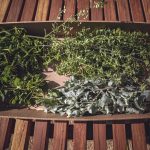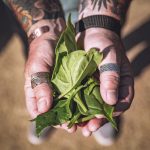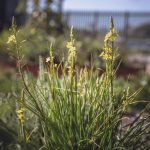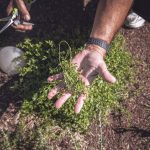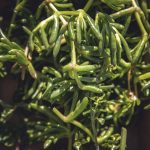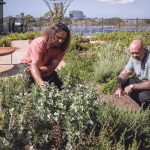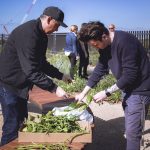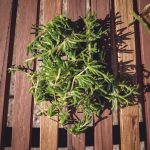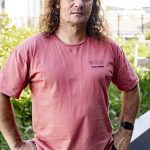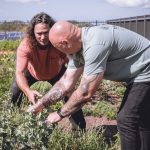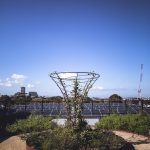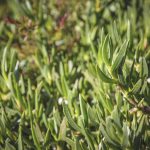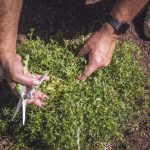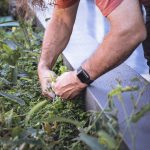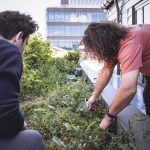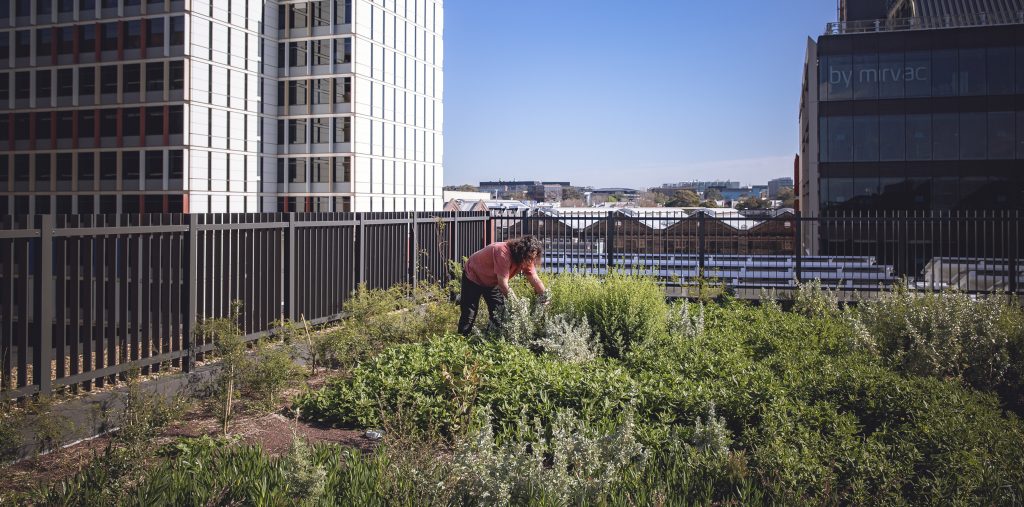
To potter (v): to spend time in a pleasant, relaxed way, often doing small jobs in the house.
Interview: Maggie Scardifeld
Image credit: Rowan Matthew Jackson | Dr Exclesior’s Photography
Sea celery, native parsnip, yam daisies, native leek, Warrigal greens, saltbush and finger limes. Walking around Sydney’s inner city suburb of South Eveleigh, no one would blame you for not being aware of the abundance of native Australian edibles that are, quite literally, growing above your head.
Clarence Slockee and Christian Hampson, founders of the Indigenous start-up Yerrabingin, have collaborated with Mirvac and multiple community networks on the world’s first Indigenous rooftop farm for urban food production. Officially opened on April 10, Yerrabingin Native Rooftop Farm is as much about fostering community and Connection to Country as it is about rehabilitating threatened Australian plant species. We spent a sunny morning pottering about the rooftop with Clarence and Christian, talking native bees, the oldest living culture in the world and how nature is the best storyteller of all.
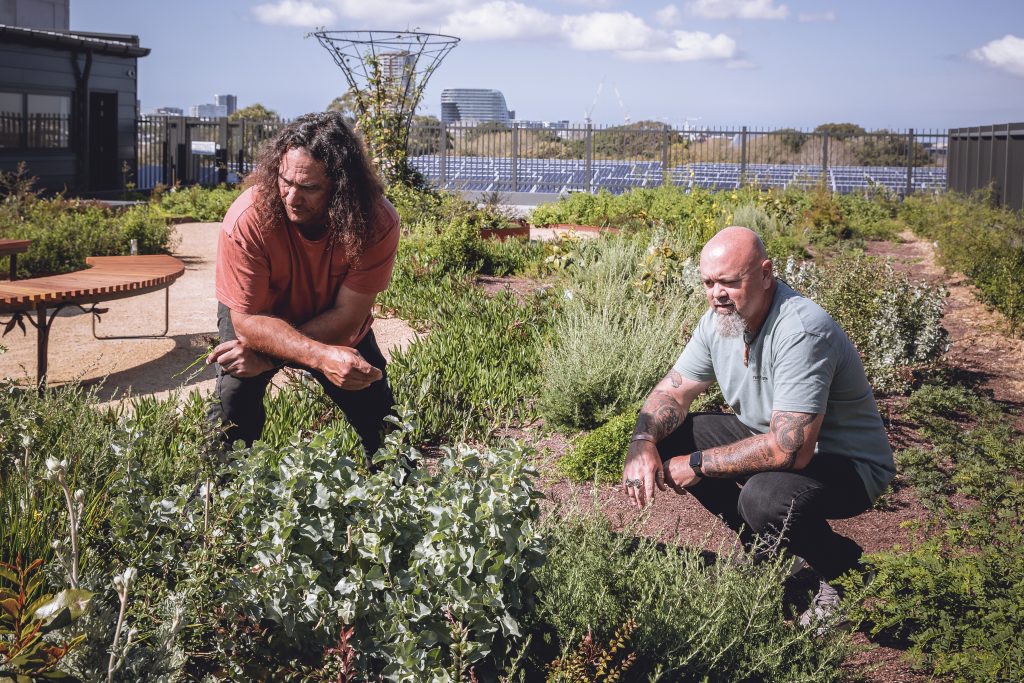
How many plants are up here, team?
CLARENCE: We’re getting close to two and a half thousand plants now. Back in February over two days we planted 2,000 edible, medicinal and cultural plants all up, between only four of us. We had to bring the 2,000 plants up in the lift! It was a big couple of days.
How did you decide what to plant and where?
CLARENCE: There was a lot of planning. Given it’s on a roof, we had many considerations, particularly around the weight, so the soil mix we use is lighter than regular soil. There were a whole lot of engineering problems we had to get over, but the solutions ended up making the design even better.
I notice there are no trees. Was that because of the weight, too?
CHRISTIAN: Originally we wanted to plant trees but they would have gotten too heavy in about two years. Instead we designed trellises, and a working blacksmith in the precinct made them for us. The climbing plants will cover the trellises and it will look like a tree. They’re already starting to take shape and that’s only after six months.
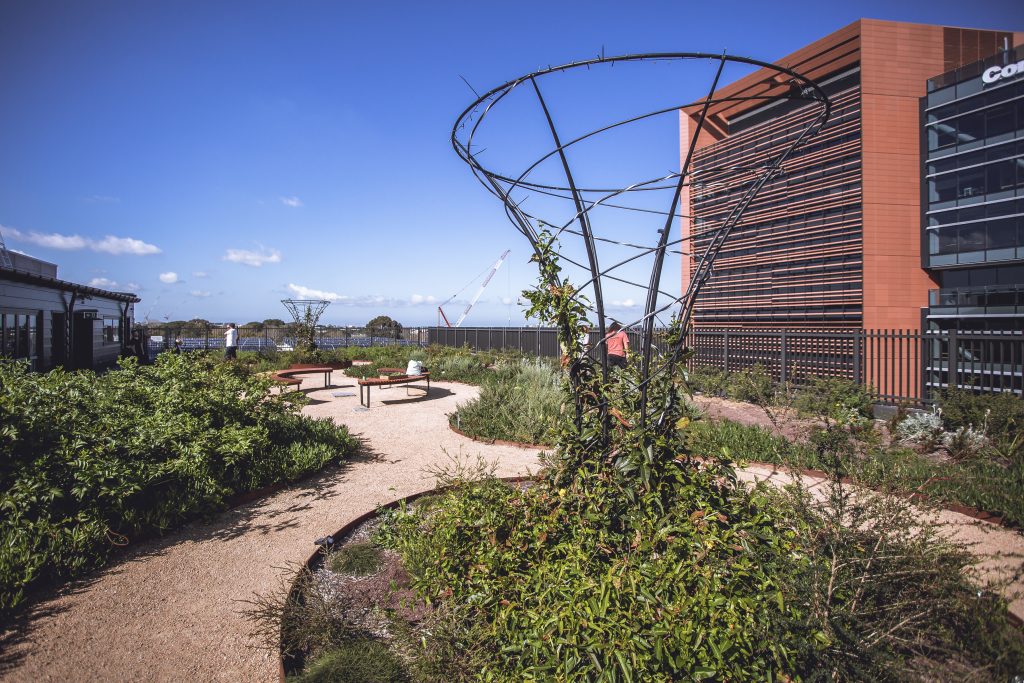
Does compost play an important role?
CHRISTIAN: We can’t add bulk to the soil, so we’re collecting all the food organics from cafes in the precinct and have 10 hungry bin worm-farms. We can process about 30 kilograms of food organics a day, and the worm waste just goes back onto the gardens in the precinct.The worm wee, on the other hand, is used on the rooftop. We’re trying to close the loop.
CLARENCE: We’re also 100% organic. We use permaculture and Aboriginal land management principles to give these plants the best chance that they can have. We’ve planted specific species that are nitrogen fixers, like native Indigo, Indigofera australis, with its beautiful purple flowers. They take the gaseous nitrogen from the air, and convert it into nitrogen that the other plants can use in the ground. It’s a big push on biodiversity.
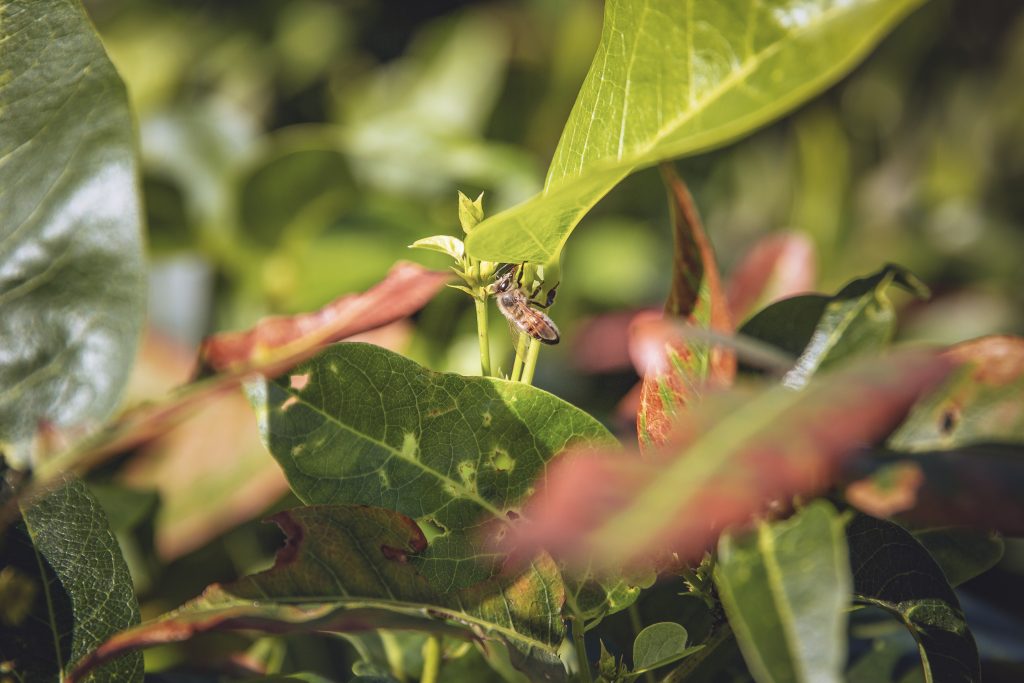
What’s thriving in the garden, so far?
CLARENCE: The saltbush, the native mints, the Warrigal greens, or Tetragonia tetragonioides, they’ve gone nuts! In the Sydney Aboriginal language Warrigal is the dingo, and back in the day you’d see dingoes scratching in and around it, thus the name. It’s a wild spinach and the same as it was 60,000 years ago. It grows very quickly (and makes great pesto). We only planted them six months ago and we’ve already harvested half a tonne.
What else is going great guns?
CLARENCE: The dune banana, or rounded Noon-flower. They call it ‘karkalla’ down south, but we’re trying to rename it dune banana. You can eat it raw, but at our opening the chefs did it with a lemon myrtle vinaigrette and crispy-skinned barramundi.
Are food miles a driving force in this project, too?
CLARENCE: The chefs we work with are very keen on the idea of food steps, instead of food miles. The dune bananas are a classic example. A lot of that is wild-harvested in South Australia and flown to Sydney for a chef to use. Now the chefs can literally just walk here. Jock Zonfrillo is one of the chefs we’re working with, his forager Peter comes in, grabs some buckets of produce and takes them over to the Orana pop-up in Surry Hills.
Have you always felt connected with plants?
CLARENCE: As an Aboriginal man, I’ve always loved the bush. I can see green space constricting now, that loss of ecology and biodiversity, and it’s sad.
And how did the two of you come to work together?
CHRISTIAN: We’ve known each other for 20 years. I was at what was formerly National Parks and Clarence was at the Botanic Gardens. All the Aboriginal staff would get together and talk about Aboriginal issues. We always had multiple ideas together. This is only one of our business models, we’ve probably got about seven or eight!
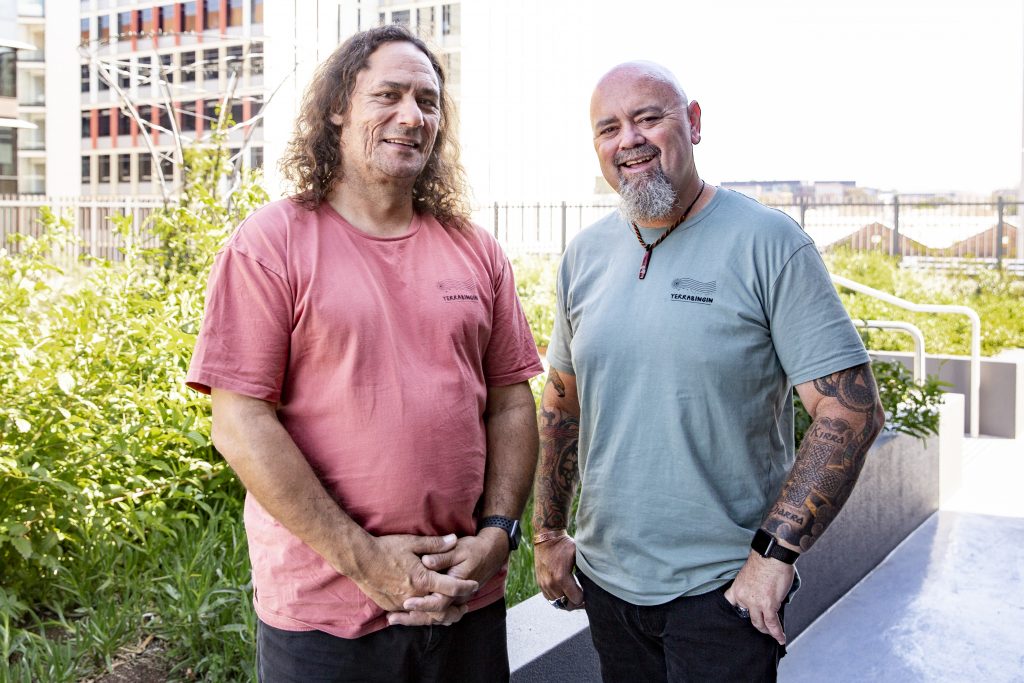
What’s been the most exciting development in the garden recently?
CLARENCE: We’ve had a heap of native bees, Tetragonula carbonaria, up here. We’re so stoked to see them! Normally it’s quite difficult to attract them to rooftops as they don’t really like the wind, and they don’t like to fly too far, or too high. But a lot of the species we’ve planted are attractors for them. Things like the Hardenbergia, because of the size of its flower.
What are some of the most interesting species you’re growing?
CLARENCE: The yam daisies for sure, Microseris lanceolata. They are one of the threatened species that were a staple for Aboriginal people all up and down the East coast, and down into Victoria. They’ve been flowering and self germinating, so we’ve already got more popping up. We’re just stoked to be part of bringing back these really unique plants, but also these really unique flavours.
How do you envisage the space evolving and growing in the future?
CLARENCE: People say, well, it’s not really a farm. And I say, well, we’re not growing a massive quantity, but it’s a showcase and a prototype to show that you can have a mass of biodiversity, as opposed to the monoculture of traditional agriculture where you just grow one plant, row by row, to make it easy to harvest and weed. We want all these plants working together.
What about from a community standpoint?
CLARENCE: It’s a community space. So during the week it’s open for anyone to just come up and enjoy it. You could come and bring a book, have lunch, hang out. There’s a fire pit that’s gotta go in the middle, eventually. That will be our yarning circle when we hold night events.
CHRISTIAN: You have to be agile. We want the pavilion to be used. We’re looking at Aboriginal Astronomy events, all kinds of augmented reality projects. We’ve had our first same-sex wedding on the roof. We’re licensed, too, so you can expect live music events, after work drinks and things like that. We’re restricted to 50 people, but we think that’s a pretty good number!
You’re committed to employing local Aboriginal people, too.
CHRISTIAN: Our workforce is 80% Aboriginal. We really want to help develop young Aboriginal people, and the way that we’ve structured the business is so that people who are working with us, will move into a role where we’ll offer them a portion of that arm of the business.
CLARENCE: Another key thing is trying to guide Indigenous communities who have land, as to what species would be good for them to grow. And then we can also act as a conduit back to the retailers who want it.
Do you hope Yerrabingin Rooftop will inspire more people to connect with plants?
CHRISTIAN: Absolutely. The whole purpose of the roof is to get people to understand just how unique our native plant species are.
CLARENCE: This isn’t a replacement for going out and connecting with nature, but it does allow for people who may not have the time, capacity or the ability to get out into nature – to come and connect in some way with Mother Nature.
Yerrabingen is located in Eveleigh, Sydney. To find out what’s going on, or book an event, visit their website a www.yerrabingin.com.au

